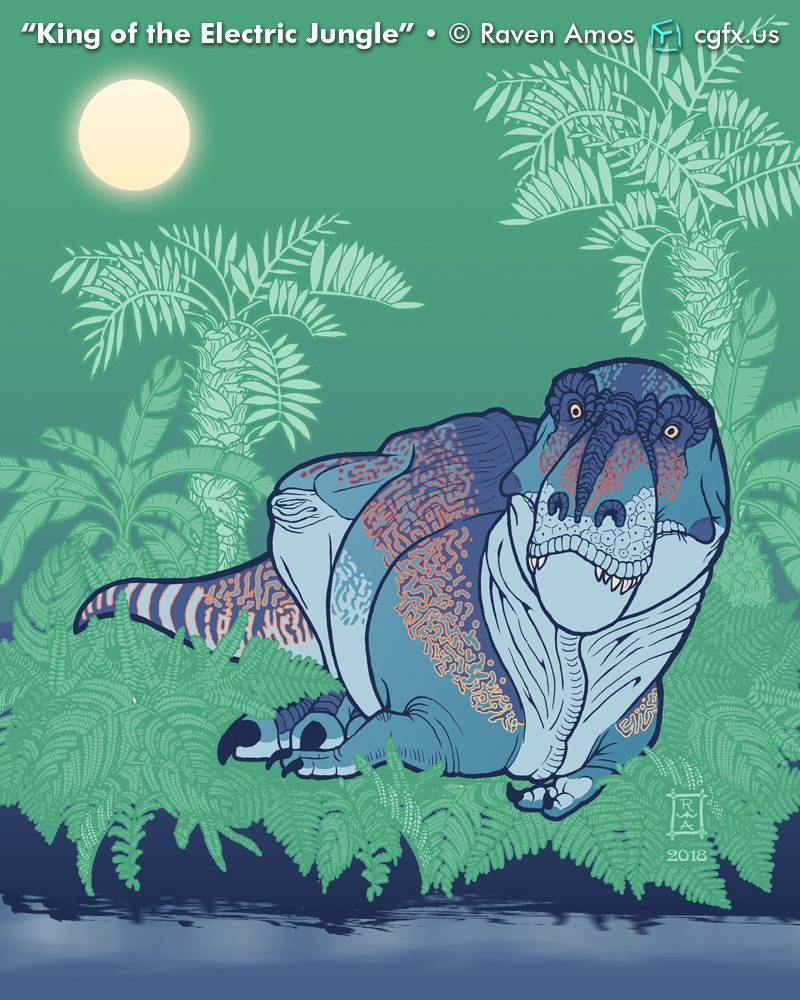Illustrator:
A lounging blue Tyrannosaur stares out of a hazy electric green jungle across a lazy stream on a warm afternoon in late summer.
Although I was more interested in exploring color and patterns rather than exploring science with this painting, I also included some recent findings on Tyrannosaur skin covering and compared the bone textures on the skull with the skulls of crocodiles and birds - Tyrannosaurus rex's smaller cousin Daspletosaurus horneri seems to have sported a tactile snout, not unlike a crocodile's, complete with sensory pits called "foramina". As fond as I am of the idea of all kin of Tyrannosaurus sporting at least some sparse coat of feathers, I must concede that there is no evidence to support such on the larger members of the family tree, and other skin impressions hint at large Tyrannosaurs, especially those in southern climates, were more scaly "murdercrocs" rather than my preferred "murderbirds".
Scaly T. rexes are "back", scientifically speaking - for now.
For this reason, I felt a desire to evoke the hazy, nostalgic color palettes, themes, and patterns associated with the "Vaporwave" art and music movement as seen through the lens of "deep time". The coloration and pattern, though fantastically and speculatively garish, is also somewhat rooted in science - Bob Nicholls' 2016 Psittacosaurus sculpture and subsequent co-authored scientific paper discusses a coat pattern known as "countershading" - combinations of light and dark colors that break up an animal's outline, usually involving the lighter color on the belly and the darker color on top.
Citations:


